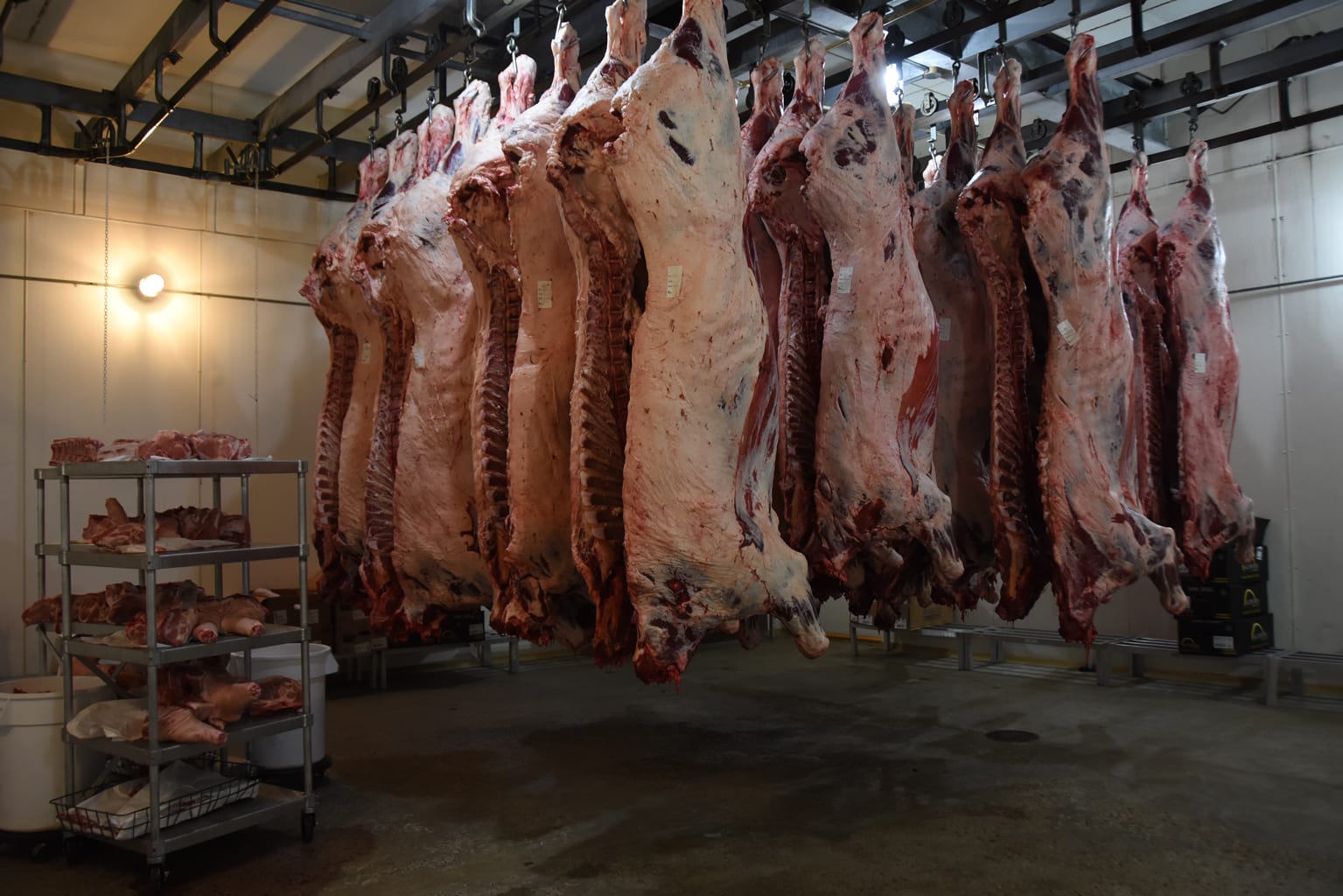Check Out the Regional Taste at Bagley Farms Meat Market Edwardsville IL: Fresh and Delicious
Check Out the Regional Taste at Bagley Farms Meat Market Edwardsville IL: Fresh and Delicious
Blog Article
Uncover the Art of the Butcher's Cut in a Modern Meat Market
In the ever-evolving landscape of contemporary meat markets, the butcher's cut has actually transcended its standard origins, merging olden craftsmanship with contemporary practices. Today's butchers are not merely processors of meat; they are knowledgeable artisans who emphasize sustainability and ethical sourcing. Their know-how in choose and preparing cuts tailored to specific cooking demands uses an unmatched eating experience. What genuinely sets the modern butcher apart is their ability to build a deeper connection in between consumers and the beginnings of their meat. Exactly how do these masters balance practice with innovation, and what effects does this have for the future of meat usage?
Development of Butchery Techniques
The development of butchery techniques mirrors a rich tapestry of technology and adaptation driven by advancements in modern technology, changes in customer demand, and a much deeper understanding of meat science. Historically, butchery was a craft gave with generations, with methods refined over centuries to make best use of yield and taste. Nevertheless, the commercial transformation ushered in automation, transforming typical methods and making it possible for large-scale handling.
The mid-20th century saw butchery strategies further improved by scientific understandings right into muscular tissue biology and meat aging, enhancing both tenderness and taste. Technologies like vacuum cleaner product packaging and refrigeration extended product shelf-life, enabling butchers to expand offerings and improve high quality control. This duration also marked the increase of customized equipment, such as band saws and meat slicers, which enhanced precision and effectiveness in meat handling.

The 21st century has actually introduced digital technology right into the butchery realm. Computerized systems now assist in monitoring pet provenance and maximizing cuts to fulfill details consumer choices. In addition, a rebirth in artisanal butchery has actually arised, mixing standard skills with modern knowledge to accommodate customers seeking honest and lasting meat alternatives. This advancement emphasizes a vibrant interplay between tradition and development, meeting contemporary needs while protecting the craft's heritage.
Recognizing Meat Cuts
Recognizing the complexities of meat cuts is vital for both butchers and consumers looking for quality and worth. Each cut originates from a various component of the animal, presenting distinct tastes, structures, and cooking approaches - bagley farms meat market edwardsville il. Mastery of these distinctions not only boosts cooking experiences but additionally maximizes the energy of each carcass. For butchers, accurate cuts mirror skill and respect for the craft, making sure minimal waste and ideal yield.

Understanding muscle make-up is critical; muscular tissues utilized more frequently by the pet click to read have a tendency to be tougher and are best matched for sluggish cooking approaches, while less-used muscle mass, like those located in the loin, are a lot more tender and suitable for grilling or roasting. Knowledge with these distinctions empowers customers to make educated selections, improving their cooking ventures.
Selecting Top Quality Meat
Picking the best meat entails even more than simply picking an aesthetically enticing piece from the screen. The art of choosing top quality meat requires a discerning eye and understanding of details characteristics that symbolize freshness and excellence.
Second of all, think about the marbling, which refers to the white streaks of fat within the muscle. Proper marbling is a crucial indicator of tenderness and flavor, as it thaws during cooking, boosting the meat's juiciness. Bear in mind, higher marbling typically correlates with exceptional quality cuts, such as USDA Prime.
Texture is one more vital variable; meat needs to really feel solid to the touch, not slimed or overly soft. Additionally, bear in mind the aroma. Fresh meat must have a clean, neutral odor, without any kind of sour or repulsive smells.
Coupling Cuts With Cooking Techniques

On the other hand, harder cuts like brisket and chuck roast are abundant in collagen, which damages down into jelly when prepared gradually. These cuts are suitable for braising or slow-moving roasting, enabling the meat to tenderize gradually and establish deep, intricate tastes. Cuts such as short ribs and pork see this shoulder get on well with slow-cooking techniques, where prolonged cooking times change their robust structures into succulent meals.
Lamb shanks and oxtail, which need extended cooking to tenderize, are perfect prospects for cooking or slow simmering. These techniques coax out rich, passionate flavors while maintaining wetness. By comprehending the special attributes of each cut, cooks and home cooks alike can elevate their cooking creations, making sure each recipe is both pleasing and unforgettable.
The Butcher's Role Today
Navigating the developing landscape of the modern meat market, the butcher's role today expands beyond mere prep work of cuts. Contemporary butchers are cooking artisans, teachers, and supporters for lasting methods.
Along with crafting exact cuts, butchers currently engage straight with clients, supplying cooking guidance and tailoring selections to fit private requirements and choices. Their know-how in meat aging, marbling, and taste accounts empowers consumers to make educated decisions, enhancing their cooking experiences. This customized solution exhibits the butcher's progressing role as a trusted consultant in the kitchen.
Moreover, butchers are crucial in minimizing waste, using whole pets to produce diverse items such as sausages and supplies. This extensive approach not just appreciates the pet yet additionally aligns with modern sustainability goals. In this way, the contemporary butcher embodies both tradition Read More Here and innovation, adapting to an ever-changing market while maintaining the artistry and stability of their craft.
Verdict
Mastery in understanding varied meat cuts and top quality indicators empowers butchers to give educated suggestions, lining up specific cuts with optimum cooking methods. By recognizing historical methods while accepting contemporary demands, the butcher's function stays crucial in today's advanced meat market.
Report this page